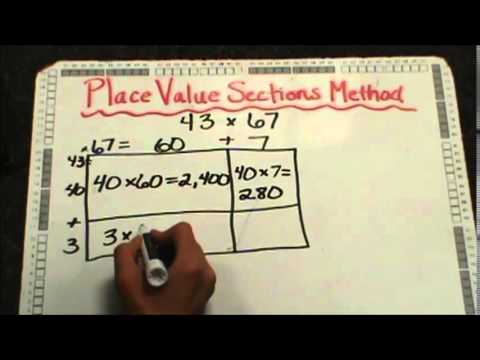Contents
To begin with, even when two persons agree on the welfaristic approach to social evaluation, they may well disagree on the nature of utilities, or more broadly welfares, to be used in their evaluative exercises. If a person takes the ordinalist (resp. cardinalist) view, he is moving from the welfarist node n2 toward the node n3 (resp. Is to inform the allocation of scarce resources with a view to improving ‘social welfare’ (variously known in other disciplines and contexts as ‘social value’, or ‘the social good’, or ‘the public interest’). Positive economic analysis is the study of the effect of a particular policy on an economy.
- Unless you have hard, testable evidence that can prove or disprove why farming is the most important industry in the country, you’re merely expressing another opinion, not a fact.
- The statements under positive economics focus on cause and effect relationships.
- While normative economics can be useful when brainstorming or establishing goals for a company or a government, it shouldn’t be used to set policies and regulations.
- Positive and Normative Economics is rightly known as the two arms of Economics.
- Economic sociology is a branch of sociology studying economic phenomena like markets and economic behavior, challenging mainstream economic theory.
A clear understanding of the difference between positive and normative economics may lead to better policy-making if policies are made based on a balanced mix of facts and opinions . Nonetheless, numerous policies on issues ranging frominternational tradetowelfareare at least partially based on normative economics. Normative economic statements are those statements that express an opinion or judgement. Often the words ‘ought,’ and ‘should’ are found in these types of statements. In contrast, positive economics are based on facts and evidence, and can be proven true or false. They do not contain any emotional ties to our own personal experience that normative statements do.
The statements under positive economics can be tested or verified. The statements under normative economics, on the other hand, are opinions and recommendations which can’t be verified until they’re acted upon first. When it comes to making important decisions for a company or government such as rules, regulations, and policies, normative economics would not be an ideal approach. This is where positive economics comes in because, as a branch of the field, it is based upon testable, amendable facts. For example, normative economics is concerned with how people perceive a given circumstance and the ethically appropriate actions that must be taken.
The statements of this type of economics are rigid and prescriptive in nature. They often sound political, which is why this economic branch is also called “what should be” or “what ought to be” economics. Positive economics is objective and fact-based where the statements are precise, descriptive, and clearly measurable. These statements can be measured against tangible evidence or historical instances. There are no instances of approval-disapproval in positive economics. Positive economics and normative economics are two standard branches of modern economics.
The term “positive” isn’t used to imply that economists always convey good news, of course, and economists often make very, well, negative-positive statements. Positive analysis, accordingly, uses scientific principles to arrive at objective, testable conclusions. Positive economics explains cause and effect relationship between variables. Positive Economics refers to a science which is based on data and facts.
Under the second setting, a regulatory authority fixes an overall emissions cap and issues a corresponding amount of tradable emission allowances, either for free or at a cost. Normative economics first originated from “old-style welfare economics,” which is a simplified version of Pigou’s Economics of Welfare. “New welfare economics” came as the second form of normative economics in the 1930s. It used the Pareto Principle and the Compensation Principle to make normative statements about policies and state whether they were improving welfare or not.
Normative economics
These assertions can be tested against real-world data or precedents in history. In positive economics, there are no instances of approval-disapproval. There is a difference between normative and idealistic, and the latter refers to an ideal model or standard.
Normative statements are generally subject to debate and could potentially have essays or discussions about their merit. If a statement could be easily proven true or false with adequate data then it is likely not a normative statement. This is a positive statement and not a normative statement because the statement itself is testable. We can look up the data on who won every playoff game through the NFL’s history to see which team has in fact won the most playoff games. A normative statement is a statement that stresses an opinion or belief that cannot be readily tested. They generally suggest a mindset that certain things should happen in order for the world to be better.
Because Normative Economics is based on judgment, it can cause biased judgments. This means that it can be used to support different ideas to explain the world around us which may not s actual fact. The Structured Query Language comprises several different data types that allow it to store different types of information…
Ask an economics question
Positive economics is the study of economics based on objective analysis of what is occurring and what has been occurring in an economy. Behavioral economics has also been accused of being normative in the sense that cognitive psychology is used to steer (“nudge”) people to make desirable decisions by engineering their choice architecture. This is different from a positive statement that describes the situation and conditions as they are.
Most of the people think that the statements which are commonly accepted are a fact but in reality, they are valued. By, understanding the difference between positive and normative economics, you will learn about how the economy operates and to which extent the policy makers are taking correct decisions. Normative economics is a subjective idea that focuses on ‘what ought to be.’ Normative statements are often found in the media where bloggers or journalists express opinions.

It considers that the economy as a subject must issue opinions on economic projects and policies. Evaluate the results of the economic procedure, rating them as good or bad. Branch of economic analysis that provides recommendations and advice about how the economy should work. This is not a normative statement because it is not a belief or opinion but something we could test and verify or not. However, the following is an example of a normative statement. This post was updated August 2018 with new information and examples.
Normative economics concept
Welfarism and extra-welfarism are alternative normative economic frameworks for ranking resource allocations. By normative, we mean economic analysis intended to answer questions such as, What ‘ought’ we to do? Normative analysis unavoidably rests on value judgments regarding, for example, as to what constitutes a benefit.
In considering this statement, we know we’ll be able to conduct research and gather evidence to prove or disprove this idea. Now let’s look at some examples of positive statements to help you see the difference. It’s also normative economics to say that no one should be entitled to inherit anything because the word “should” is in there, which is commonly used in this context. This statement is testable and is therefore not an example of a normative statement.

The economics that uses value judgments, opinions, beliefs is called normative economics. This branch of economics considers values and results in statements that state, ‘what should be the things’. It incorporates subjective analyses and focuses on theoretical situations. Furthermore, the welfarism in full is implied if the Pareto principle is replaced by the Pareto indifference principle to the effect that two social states should be judged socially indifferent if all individuals judge them to be indifferent. For all practical purposes, therefore, we may be able to think that Arrow’s social choice theory can be sensibly accommodated within the class of ordinalist-welfarism without interpersonal comparability. Given Arrow’s purpose of critically examining the logical consequences of welfaristic “new” welfare economics, this seems to be a legitimate procedure to follow.
Table of Contents
For example, in the context of evaluating alternative methods of personal distribution of income and wealth, we may value one method vis-á-vis another method in terms of the consequential changes of individual happiness. In this case, more often than not, the required informational basis of social evaluation may be welfaristic in nature. examples of normative economics However, we may alternatively invoke the evaluative method of the Lorenz curve or the Gini coefficient in the space of income and wealth. In this case, the required informational basis of social evaluation cannot but be nonwelfaristic in nature. You might ask what use the positive economics is if it can’t offer a course of action.
In this simple scenario, the combinations of the fact and the solution can be easily traced down from positive and normative economics concepts. Normative economics discusses what desirable outcomes which should be achieved are and what are undesirable things that should be avoided. For example, India should not be an overpopulated country OR Prices should not rise – are normative statements.
Both types have their place, and on their own both also have flaws. Integrating positive and normative economic statements together is often required in order to create the policies of a country, region, industrial sector, institution, or business. Most public policy is based on a combination of both positive and normative economics. Positive Economics is basically about making predictions about economic phenomena. The predictive ability of positive economics is based on identifying trends in data from the past when certain causal forces were acting in isolation with each other. Normative economics is basically about making judgments on which policies and institutions ought to be adopted.
However, either a price or a quantity instrument may not be the final answer. There exists a wide array of hybrid instruments that may be more efficient than both price and quantity instruments. The most important ones of these more sophisticated https://1investing.in/ policy tools are portrayed. The choice between price and quantity instruments is, however, not restricted to informational deficits and asymmetries. The choice may also be an issue under other market imperfections or complementary circumstances.
Economical Clarification
Positive economics describes and explains various economic phenomena, while normative economics focuses on the value of economic fairness or what the economy should be. Extra-welfarism, in contrast, argues that normative economic analysis should be based on a larger set of information than simply the utilities attained by individuals in the society. Different variants of extra-welfarism emphasize different types of information to either supplant or supplement utility information.
It does not pass any judgment on any economic policy or economic behavior. The major difference between positive economics and normative economics is that the statements made by positive economics can be tested for their validity. Conversely, judgments passed by normative statements cannot be tested for their validity because of their subjectivity. As a branch of economics, normative economics is subjective in nature and concerned with ‘what ought to be.’ In other words, normative economics focuses on opinions and theoretical scenarios rather than actual facts.
